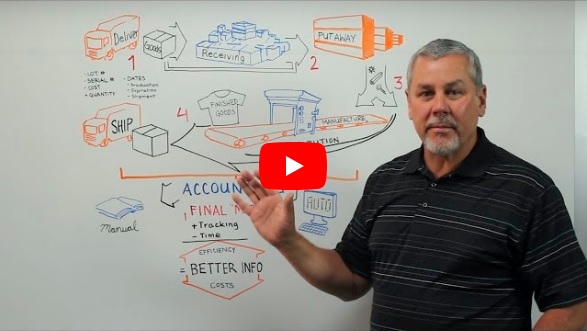Inventory Management

For some companies, identifying, segregating, and disposing of excess and obsolete materials is one of the most difficult things they have to do. If you are a Supply Chain Manager, Warehouse Manager, or Inventory Manager this should come as no surprise. You can easily recognize and identify obsolete parts but for some reason no one else will acknowledge them nor will they willingly approve of disposing of them, even though there are a variety of ways to identify and dispose of excess/obsolete product/inventory.
In the United States GAAP (Generally Accepted Accounting Principles) is quite clear on the subject which is exactly what exacerbates the issue (this is not applicable in the Canadian Territories). I paraphrase … once obsolete materials are identified it is to be segregated and disposed of in a timely manner. This timely manner is not intended to cover 3 years or 18 months, but rather within the fiscal year period.
Obsolete inventory is inventory that a company still has on hand after it should have been sold. When inventory can’t be sold in the markets, it declines significantly in value and could be deemed useless to the company. To recognize the fall in value, obsolete inventory must be written down or written off in the financial statements in accordance with Generally Accepted Accounting Principles (GAAP). A write-down occurs if the market value of the inventory falls below the cost reported on the financial statements. A write-off involves completely taking the inventory off the books when it is identified to have no value and, thus, can’t be sold. GAAP requires companies to establish an inventory reserve account for obsolete inventory on their balance sheets and expense their obsolete inventory as they dispose of it, which reduces profits or results in losses.
* GAAP Treatment of Obsolete Inventory https://www.investopedia.com
How many of these items are you currently housing?
- A carton of samples dropped off in the warehouse with the comment, “just hang on to these, we’ll send them out soon” and that was 3 years ago!
- Boxes of materials that have “old part numbers” that are now covered with dirt and located so far back on a pallet that no one wants to drag them out.
- A box of sales literature that was sent from upstairs with a note “hold until I get a shipping address.”
- Left over parts from an R&D effort even though an Engineering Change Order called out for different parts and the warehouse was never purged of the components.
- Or even the well intentioned rookie buyer that bought 5,000 units (based on an economic order quantity) considering that the 50 each unit quantity was needed.
- Boxes of parts returned from a supplier rejected due to restocking fees. None of the boxes have less than an inch of dirt on them.
- A carton of “mixed media” – various parts are co-mingled because the boxes have been crushed/busted/deteriorated. No one wants to even acknowledge them.
What To Do?
These problems exist because it’s an emotional issue rather than one based on logic. Some individuals (owners, accountants, managers) will not even acknowledge the cost to carry rule which recommends an item’s disposal after 3 years of non use, or GAAP that says if the inventory tag is still on an item after 1 year mark it obsolete and dispose of it. They take the position “that we bought it, paid for it, and it’s not costing us anything just sitting there.” Well it is costing you something even if it just the cost of space, cost of material handling, taxes, and insurance.
However from their standpoint, the disincentive is real. It adversely effects profitability (regardless that GAAP also allows for inventory write off reserves and don’t forget we do shoot the messenger if not properly documented – photographs help).
However, the bottom line is it does affect the bottom line. So here’s a way to approach the identification, packaging, and approval process within your company.
First use the team approach. It has to be done in a non-threatening, non-adversarial manner. Form an interdisciplinary team representing material, purchasing, warehousing, accounting, IT, operations, and engineering.
Then it’s important to tackle it in small bites by preparing a list and doing a number of computer runs. The list must contain part number/sku, short description, quantity on hand, unit cost (actual, average, or standard), and extended cost (cost times quantity on hand). These lists can now be sorted in part number or descending dollar sequence for analysis. Here’s what the team should look for:
- All items in inventory that are not on a bill of material. Have engineering check to ensure that the materials are not on any bills of material.
- All inventories that have not moved (picked, adjusted, issued, or shipped in 5 or more years (then do it again for 3 years, 2 years, and finally for 1 year). These separate lists should then go to material, engineering and operations for review and concurrence (only allow 10 days for responses. If no responses then by default you have concurrence).
- After review and concurrence declare the list obsolete. Write a formal letter to accounting detailing all the steps that the effort went through and the overall consensus (copy the team members) declaring the material obsolete and requesting the associated write off. Accounting should establish a reserve for this write off and a reserve in next year’s budget as well.
- Turn the material over to Investment Recovery/Reverse Logistics for resale, scrap and/or disposal. Immediately begin the disposal process and make it all go away quickly.
Your path to business success.

